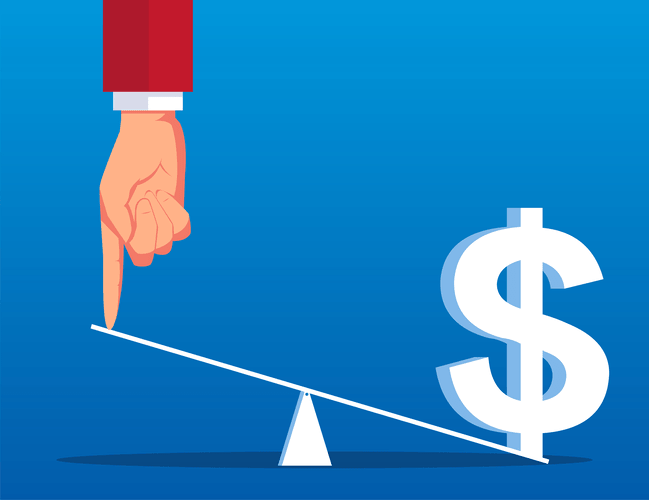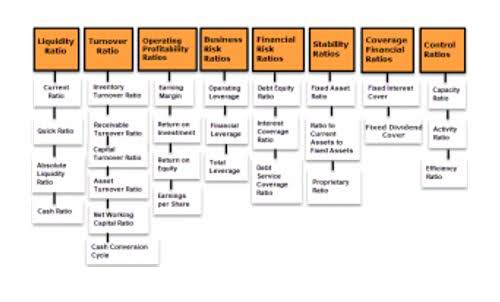Why does an increase in accounts payable appear as an addition on the statement of cash flows?

Once the payment is made, the accounts payable entry is reversed, reflecting the debt settlement. Beyond just representing the amount a business owes to its vendors or suppliers, Accounts Payable can provide deep insights into the company’s operational and financial health when used in various financial ratios. Instead, it appears under Current Liabilities section on Balance Sheet only when there are unpaid invoices or bills from vendors, suppliers or creditors at the end of an which accounts are found on an income statement accounting period. Accounts Payable also plays an important role in managing cash flow within an organization. By tracking outstanding balances, businesses can forecast their financial obligations and ensure they have sufficient funds available to cover future payments. Companies must maintain the timeliness and accuracy of their accounts payable process.
- AP represents the money a company owes for goods or services it received but hasn’t paid for yet.
- Accounts payable refers to the vendor invoices against which you receive goods or services before payment is made, meaning you’ve purchased goods on credit.
- While both of these metrics denote profits made, Gains refer to profits that don’t relate to the core business of the company.
- Eventually their forecasting abilities may improve as a result of the standard.
- This real-time collaboration eliminates version conflicts, software updates, security loopholes, imports, exports, and other inefficiencies.
- Further, special emphasis must be given to accounts payable representing larger transactions.
Navigate the current landscape of AI
It is important to note that the accounts payable category represents the short-term obligations of your business. Meaning it represents the aggregate amount of short-term obligations that you have towards suppliers of goods or services. Therefore, a combination of accounts payable and accounts receivable is important for your business’s performance. In this article, we will talk about the what accounts payable means, the accounts payable journal entry, the accounts payable process, and examples of accounts payable.
The concept of ‘days’ in Accounts Payable: What is days payable outstanding (DPO)?

The difference between accounts receivable and accounts payable becomes clear when looking at the types of transactions they cover. Accounts payable (AP) transactions involve money owed to suppliers or vendors, such as inventory, raw https://www.bookstime.com/ materials, or service payments. Accounts payable (AP) refers to the money a company owes to its suppliers for goods or services. In contrast, accounts receivable (AR) denotes the money a company owes its customers.
Accounting

Meaning the accounts payable account gets credited as there is an increase in the current liability of your business. Meaning that Robert Johnson Pvt Ltd paid 10.43 times to its suppliers during the year. You can also calculate the accounts payable turnover ratio in days, this ratio showcases the average number of days after which you make payments to your suppliers.
Furthermore, including accounts payable on the income statement provides transparency for investors and stakeholders who want to know how the company manages its finances. It shows fixed assets that the business is staying up-to-date with payments and has a solid plan in place for managing its debts. However, accounts payable does not appear on the income statement directly. Instead, it affects certain expense categories such as cost of goods sold (COGS), operating expenses, and interest expense through accrual accounting method. Although AP can affect the balance sheet and the statement of cash flow of a business directly, it has no direct relationship with the income statement.

Once payment is approved the account payable department will manage the releasing of payment as per the terms agreed with the creditors. The payments of the invoices or other payments to creditors must be authorised by an appointed staff member in accordance with the company hierarchy. When authorising a payment some checks are in place to make sure the payment amount is in concordance with the invoice payable or with the terms agreed with the creditors. If your supplier has determined that you are a credible customer, you may receive early payment discounts on your accounts payable. This means while you’re receiving a discount on your accounts payable, you can give a discount on your accounts receivable to customers that make early payments. Ensuring that accounts payable are paid on time will help strengthen your company’s relationship with your suppliers.
- For the past 52 years, Harold Averkamp (CPA, MBA) has worked as an accounting supervisor, manager, consultant, university instructor, and innovator in teaching accounting online.
- Let’s explore what these figures reveal about your business’s money habits and how smoothly things are running.
- If yo receive an invoice mentioning the payment terms from your supplier, it then gets recorded in your accounts payable ledger.
- The UK rates are reduced by 10 pence in £1 for Welsh taxpayers, and the Welsh rates of Income Tax for non-savings and non-dividend income are set by the Welsh Parliament, and added to the UK rates.
- Beyond just representing the amount a business owes to its vendors or suppliers, Accounts Payable can provide deep insights into the company’s operational and financial health when used in various financial ratios.
Accounts payable, if managed effectively, indicates the operational effectiveness of your business. Too high of an accounts payable indicates that your business will face challenges in settling supplier invoices, however, too low accounts payable indicates your business is giving up on the benefits of trade credit. Effective accounts payable management also ensures that proper controls are in place and helps to avoiding errors, such as duplicate payment, inaccurate invoices, fraud by suppliers, inefficient processes, or late payment. You as a business can be viewed as a supplier, and your accounts receivables represent the amount of money you lend to your customers. Likewise, you are also a customer of your vendors and your accounts payable represent your borrowings from such suppliers.
Impact on the Cash Flow Statement
This figure reflects all outstanding obligations that the company is yet to settle with its creditors. Accounts payable and the income statement are two important aspects of a company’s financial management. An increase in the accounts payable indicates an increase in the cash flow of your business.
Accounts Payable as a Liability
Management can use AP to manipulate the company’s cash flow to a certain extent. For example, if management wants to increase cash reserves for a certain period, they can extend the time the business takes to pay all outstanding accounts in AP. Manual processes, late payments, and fraud are just a few of the significant challenges many professionals face when it comes to accounts payable. By automating the accounts payable process, small businesses, professionals, and accountants can alleviate these challenges and gain visibility into critical financial insights. Striking variations on an income signal that a company’s finance team may need to make changes or adjustments, including switching suppliers, revising prices, or slashing the budget. Accounts payable is a short-term liability, while expenses are operational costs incurred over an entire fiscal year.

Leave a Reply
Want to join the discussion?Feel free to contribute!